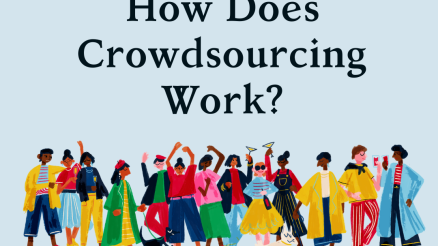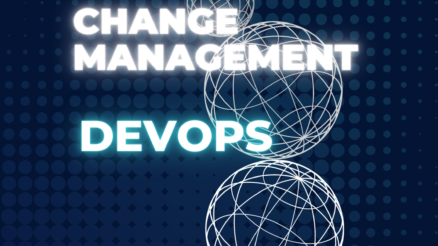In the intricate landscape of modern business, understanding and strategically engaging with key players is the cornerstone of success.
Enter the dynamic realm of customer stakeholder mapping — a powerful strategy that transcends traditional customer relations.
This blog post unveils the significance of constructing a comprehensive customer stakeholder map, offering a roadmap to navigate the complexities of stakeholder relationships.
From identifying influencers and assessing power dynamics to aligning products with customer expectations, this guide promises to demystify the process, making it an indispensable tool for businesses aiming to enhance customer relationships, drive strategic decision-making, and ultimately thrive in today’s competitive market.
Join us as we delve into the strategic realm of customer stakeholder mapping, unlocking its potential to revolutionize the way businesses connect with their most vital assets.
Who are customer stakeholder?
Customer stakeholders are individuals or groups who have a vested interest in a company’s products, services, or overall success. These stakeholders play a crucial role in influencing or being influenced by the business.
The term “customer stakeholders” goes beyond the traditional understanding of customers and includes various entities that impact or are impacted by a company’s operations, decisions, and performance.
Key customer stakeholders may include:
Customers: The primary users of a company’s products or services.
Clients: Often used in business-to-business (B2B) contexts, clients are customers who engage in ongoing relationships and may receive personalized services.
End Users: Individuals who directly use or interact with the products or services, even if they are not the primary purchasers.
Influencers: People or groups that may not be direct customers but have the ability to shape opinions or impact purchasing decisions, such as industry influencers, bloggers, or analysts.
Regulators: Government bodies or agencies that regulate the industry and may influence or be influenced by a company’s actions.
Suppliers: Entities providing goods or services essential to the company’s operations.
Investors: Individuals or groups who have invested capital in the company and have a financial interest in its success.
Employees: Internal stakeholders who contribute to the company’s success and may also be customers or users of its products or services.
Partners: Collaborative entities with a shared interest in the success of the business, such as strategic partners or alliances.
Communities: Local or online communities where the company operates, which may be affected by its activities and decisions.
What is Customer Stakeholder Map?
A customer stakeholder map is a visual representation or tool that helps businesses identify, categorize, and analyze the various individuals, groups, or entities that have a stake in the success or failure of the company.
It provides a comprehensive view of the relationships, interests, and influences of different stakeholders, allowing businesses to make informed decisions and tailor their strategies to meet the needs and expectations of these key players.
Key components of a customer stakeholder map typically include:
Identification of Stakeholders: The map begins by identifying all relevant stakeholders, both internal and external, who play a role in or are affected by the company’s operations.
Mapping Relationships: It visually represents the relationships and connections between different stakeholders, illustrating how they interact with each other and with the company.
Analysis of Influence and Power: Stakeholders may have varying levels of influence and power. The map helps in assessing and categorizing stakeholders based on their ability to impact decision-making processes.
Assessment of Interests and Expectations: Understanding the interests, expectations, and concerns of each stakeholder group is crucial. The map allows businesses to analyze and address these factors strategically.
Visualization of Interactions: The map provides a visual overview of how different stakeholders may interact with the company, each other, and the market. This visualization aids in spotting potential opportunities or challenges.
Benefits of using customer stakeholder map
Using a customer stakeholder map provides several strategic advantages for businesses. Here are key benefits:
Enhanced Customer Relationships
Understanding Stakeholder Needs: Customer stakeholder maps help businesses gain insights into the diverse needs and expectations of different stakeholders, enabling them to tailor their products and services accordingly.
Improved Communication
By identifying and categorizing stakeholders, businesses can create targeted communication strategies that resonate with specific groups, leading to more effective and meaningful interactions.
Strategic Decision-Making
Aligned Products and Services: Mapping stakeholders allows businesses to align their products and services with the preferences and requirements of their target audience, enhancing overall customer satisfaction.
Tailored Marketing Strategies
Businesses can develop targeted marketing campaigns based on the interests and concerns of specific stakeholder groups, increasing the likelihood of successful engagement.
Mitigation of Risks
Proactive Issue Resolution: Identifying potential challenges and concerns through stakeholder mapping enables businesses to address issues proactively, minimizing the risk of negative impacts on customer relationships and brand reputation.
Crisis Management
In times of crisis, businesses can refer to their stakeholder maps to quickly identify key players and stakeholders to engage with for effective crisis management.
Improved Stakeholder Engagement
By demonstrating a thorough understanding of stakeholder needs and concerns, businesses can build trust and credibility, fostering stronger and more positive relationships.
Tailoring strategies based on stakeholder insights contributes to increased customer satisfaction and loyalty, as customers feel their specific needs are acknowledged and addressed.
Optimized Resource Allocation
Focused Resource Allocation: With a clear understanding of stakeholder priorities, businesses can allocate resources more efficiently, concentrating efforts on areas that have the greatest impact on stakeholder satisfaction and business success.
Competitive Advantage
Adaptability to Market Dynamics: A customer stakeholder map provides businesses with the agility to adapt to changing market dynamics by staying informed about the evolving needs and preferences of their stakeholders.
Innovative Solutions
By continuously assessing stakeholder expectations, businesses can identify opportunities for innovation and stay ahead of competitors in meeting emerging market demands.
Step-by-Step Guide to Creating a Customer Stakeholder Map
Following are the key steps involved in creating a customer stakeholder map.
Step 1: Identify Stakeholders
Before diving into stakeholder identification, clearly define the purpose and scope of your customer stakeholder map. Understand why you are creating the map and what specific aspects of your business or project it will address.
Distinguish between internal and external stakeholders. Internal stakeholders may include employees, managers, and executives, while external stakeholders can be customers, suppliers, partners, regulators, and others who are not directly part of the organization but have a vested interest in its success.
Step 2: Conduct Stakeholder Analysis
Perform a stakeholder analysis to identify those individuals or groups who have a significant impact on or are influenced by your business. Consider the following criteria:
Power: Assess the level of influence each stakeholder holds.
Interest: Evaluate how much each stakeholder is affected by or interested in the outcomes of your business.
Influence-Interest Matrix: Plot stakeholders on a matrix based on their power and interest to prioritize them.
Step 3: Map Stakeholder Relationships
Mapping stakeholder relationships is a crucial step in creating a comprehensive customer stakeholder map.
This involves visualizing the connections and interactions between different stakeholders to gain insights into the dynamics of the stakeholder ecosystem.
Additionally, using tools and templates can streamline the mapping process, making it more organized and effective.
Step 4: Define Customer Stakeholder Attitude
Defining stakeholders’ attitudes toward your brand is crucial for effective relationship management. Using a scale of one to five, where one represents stakeholders actively against your brand, and five signifies active advocates who proactively support and promote it, allows for a nuanced understanding.
Those actively against may vocalize their discontent, posing challenges.
Those quietly against may not express concerns openly but harbor reservations.
Those on the fence are neutral or undecided, providing an opportunity for persuasion.
Quiet supporters appreciate your brand but may not actively promote it, while active advocates passionately endorse and champion your brand.
Addressing objections and understanding perspectives across this spectrum ensures a comprehensive approach to managing stakeholder relationships and achieving your objectives.
Step 5: Now plot your listed stakeholders on a four-box grid
visioning the stakeholder landscape through a four-box grid allows for a visual representation that aids in strategic decision-making.
Using a vertical line to signify influence (with five being high at the top and one at the bottom) and a horizontal line to denote advocacy for the brand (with five being highly supportive on the right and one actively against on the left), stakeholders can be plotted as follows:
Top Right (Influential Advocates): Stakeholders with high influence and strong advocacy for the brand. These are key influencers who actively support and promote your product or service.
Bottom Right (Customers with Positive Advocacy, Lower Influence): Customers who are positive advocates but may not have significant influence. While they support your brand, their impact on others may be limited.
Top Left (Influential Critics): Stakeholders with high influence but a negative attitude toward your brand. These individuals can potentially impact others’ perceptions, and addressing their concerns is crucial.
Bottom Left (Neutral Stakeholders): Stakeholders who neither influence nor actively advocate for your product or service. Understanding and engaging with this group can uncover opportunities for improvement or conversion to advocates.
Final Words
To create a customer stakeholder map is like creating a helpful map for a journey in business. By understanding who matters most to our company, we can make better products, communicate more effectively, and keep our customers happy. So, let’s remember that the journey to success in business often starts with knowing who our passengers are and making sure we’re all heading in the right direction together.



